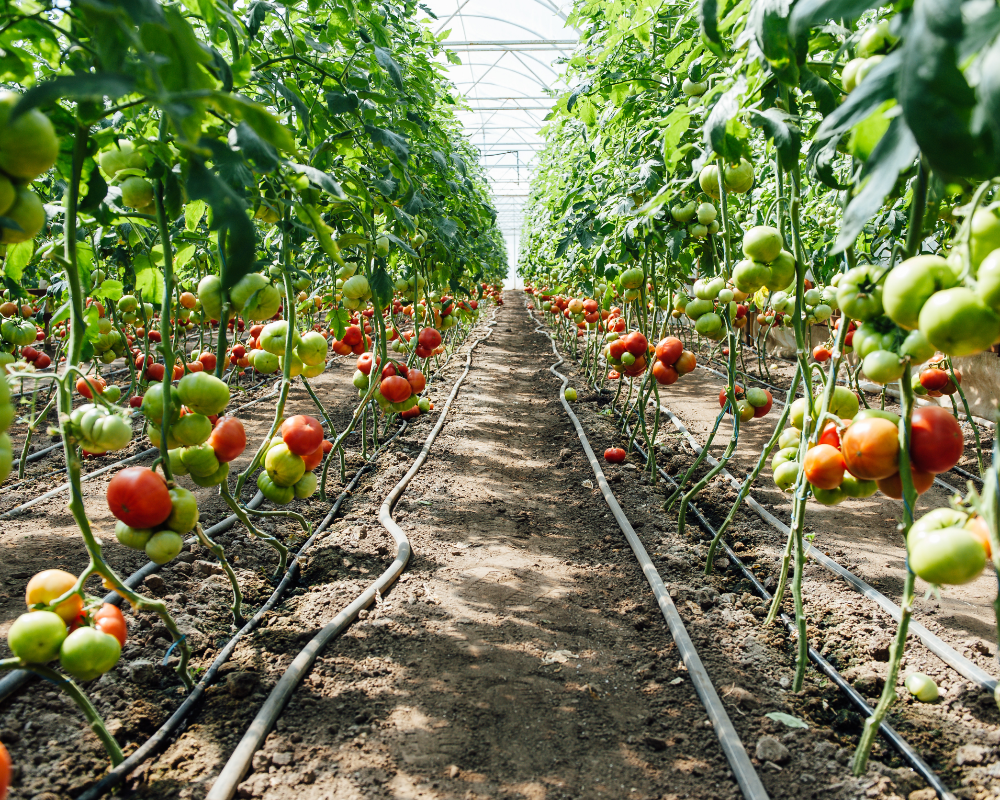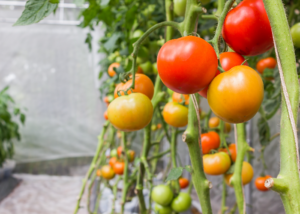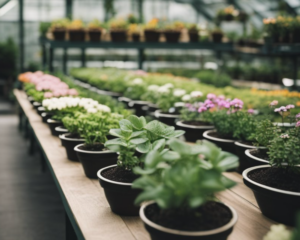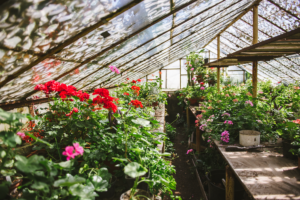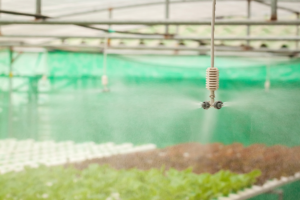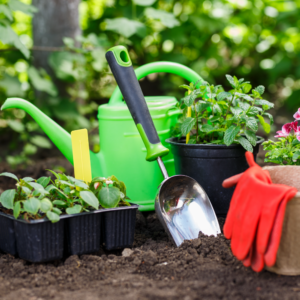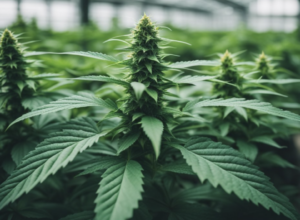Tomatoes are a staple in many cuisines, and if you’re like me, you appreciate having them fresh year-round. That’s where greenhouse tomatoes come into play. Unlike their garden-grown counterparts, these tomatoes are cultivated under controlled conditions, giving us access to juicy, ripe fruits even when the outdoor growing season is over.
I’ve noticed that greenhouse-grown tomatoes have a few advantages. Since they’re protected from the elements, these plants aren’t as exposed to pests and diseases, which means they usually require fewer pesticides. Plus, growing tomatoes in a greenhouse allows growers to optimize conditions like temperature, humidity, and light, which can lead to more uniform fruit and higher yields.
However, it’s not all about convenience and productivity. Some folks argue that greenhouse tomatoes can’t match the flavor of those grown under the sun in rich, outdoor soil. But as someone who’s snacked on both, I can say that well-grown greenhouse tomatoes can certainly compete on the taste front, especially when they’re allowed to ripen on the vine. Plus, having a reliable supply of tomatoes year-round is a game-changer for anyone who loves to cook or just enjoys a good salad.
Getting Started
When kicking off your greenhouse tomato growing adventure, it’s essential to pick right tomato varieties and create a nurturing environment from the get-go. Let’s jump into the basics from seed to greenhouse prep.
Choosing Tomato Varieties
We’ve got a wealth of tomato varieties to choose from, but it all boils down to personal preference and greenhouse conditions. Heirloom types boast authentic flavors and are great for diversity. For a steady harvest, I generally opt for determinate tomatoes since they fruit all at once. However, if space isn’t an issue, indeterminate types keep producing throughout the season. I’ve had success with sweet cherry tomatoes, hefty beefsteak tomatoes, and versatile plum tomatoes for sauces and salads.
Preparing the Greenhouse
Creating the ideal haven for the tomatoes means monitoring temperature, humidity, and ventilation. I aim for a steady temperature of about 70–75 degrees Fahrenheit, with humidity hovering around 60-70%. Good ventilation is a must to keep those pesky diseases at bay. As for lighting, I ensure there’s plenty of natural light, although supplementary lighting systems may be needed during those dreary days of early spring.
My greenhouse soil mix is a well-balanced one, rich in organic matter, and drains nicely. Here’s a quick rundown of my usual soil mix ingredients:
- Peat moss or coconut coir for retention
- Vermiculite or perlite to aid drainage
- Compost for that nutrient kick
Seeding and Transplants
Starting with tomato seeds, I plant them shallowly, about 1/4 inch deep, in moist soil mix early spring. When seedlings emerge, it’s all about keeping them happy with the right light and temperature until they’re sturdy enough to transplant.
Once my seedlings are about 3-5 inches tall and have a couple of true leaves, it’s time for their new home in the greenhouse. I space my transplants neatly, giving each plant enough room to flourish because nothing’s sadder than a stunted tomato plant lacking space to grow.
Essential Growing Conditions For Greenhouse Tomatoes
To grow healthy greenhouse tomatoes, I focus on precise temperature and humidity control, sufficient lighting, and proper soil management.
Optimizing Temperature and Humidity
In my greenhouse, I maintain the temperature between 70°F and 78°F during the day and 60°F to 65°F at night for the best tomato growth. Humidity is kept moderate, around 40-70%, to prevent fungal diseases. I use a combination of ventilation, shading, and heating systems to manage these climate conditions.
Lighting Requirements
Tomatoes love sunlight, so I ensure they get about 8-10 hours of direct light per day. During shorter days, I supplement with grow lights, hanging them 12-24 inches above the plants. For efficiency, I opt for LED lights, setting them on timers to mimic natural sunlight patterns.
Soil and Fertilization Techniques
I use loamy soil with a pH of 6.0 to 6.8, ensuring good drainage and aeration. For fertilization, I’ve found a balanced N-P-K (Nitrogen, Phosphorus, Potassium) works best. Here’s how I typically fertilize:
- Nitrogen: Application at different stages – seedling, flowering, and fruiting
- Phosphorus: Crucial for root development, I apply it early in the growing cycle
- Potassium: Important for fruit quality; applied throughout the growth period
I implement drip irrigation to supply a consistent amount of water directly to the roots, which avoids water wastage and makes sure my tomatoes get the moisture they need without overwatering.
Plant Management For Greenhouse Tomatoes
In my greenhouse, I’ve found that managing tomato plants correctly is the heart of a healthy and productive crop. The right balance of pruning and training, alongside effective pollination techniques, ensures that my plants grow strong and bear plenty of fruit.
Pruning and Training
Pruning is all about selectively removing parts of the plant that aren’t needed or are unproductive. I always start pruning my tomato plants when they’re about 12 to 18 inches tall. By removing the lower leaves and any non-fruiting branches, I make sure that the plant’s energy is focused on growing delicious tomatoes. For example:
| Action | Benefit |
|---|---|
| Removing suckers | Redirects energy to fruit production |
| Thinning leaves | Improves air circulation and reduces disease risk |
I also stake and trellis my tomatoes, which involves providing them with a support structure. This helps maintain their growth habit in a way that maximizes exposure to sunlight and air, important factors for fruit set and overall health. I find that using a combination of stakes and strings works best:
- Staking: I place a stake next to the main stem and gently tie the plant to the stake at intervals as it grows.
- Trellising: I create a trellis system with horizontal support lines for the branches to rest on, providing the necessary support as the plant and fruit get heavier.
Pollination Practices
Pollination is vital for fruit set in tomatoes, which are self-pollinating plants. However, I give nature a hand to ensure a good harvest. I use a small brush or even just a gentle shake of the flowering stems to mimic the action of the wind or insects. These actions dislodge the pollen within the flowers, allowing it to fall on the stigma – a process crucial for the development of the fruit:
- Gentle Shaking: Mimic wind or bee activity by lightly shaking the support structure or the main stem.
- Manual Pollination: Use a soft brush or cotton swab to transfer pollen from stamen to stigma during the peak of flowering, between late morning and early afternoon when pollen is most available.
I keep a consistent eye on my plants to ensure they’re trained correctly and that pollination is happening, adjusting my methods as necessary based on the plant’s performance.
Pest and Disease Control For Greenhouse Tomatoes
Effective pest and disease management is crucial for healthy greenhouse tomatoes. I’ll share strategies to tackle common invaders and keep diseases at bay, ensuring bountiful harvests.
Managing Common Pests
In my greenhouse, aphids and whiteflies are typical nuisances. Dealing with aphids involves regular inspections. When I spot them, I often reach for insecticidal soaps or introduce natural predators like ladybugs. For whiteflies, yellow sticky traps are my go-to for monitoring and control, alongside insecticidal soaps for direct intervention.
- Aphids: Use insecticidal soap, release ladybugs.
- Whiteflies: Implement yellow sticky traps, apply insecticidal soap.
Disease Prevention and Treatment
Prevention is my first line of defense against diseases. I make sure to use clean soil and disinfect tools to avoid fungal diseases and root rot. Should a disease strike, I quickly remove and destroy infected plant material. As for treatment, it varies:
- Fungal Diseases: Apply fungicides as needed, maintain low humidity.
- Root Rot: Ensure proper drainage, consider fungicides specific to root pathogens.
Maintaining a balance between prevention and direct action allows me to manage pests and diseases effectively.
Harvesting and Post-Harvest
When I grab those ripe tomatoes from the greenhouse, I focus on the timing, the method of picking, and how I handle the fruit to maintain top-notch quality.
Picking and Handling Tomatoes
I make sure to pick tomatoes when they’ve reached the proper size and the color is just right, signaling peak flavor. Harvesting usually happens by hand, and I’m careful to pick each tomato by grasping the fruit gently and twisting it off the vine. For cluster or truss tomatoes, I’ll cut the entire cluster from the plant to keep them together.
- Size & Color: Check that the tomatoes are uniform in size and have a consistent color without any green patches.
- Shape: Look for the typical round or slightly oblong shape—anything else might indicate a growth issue.
Maximizing Tomato Quality
After I harvest the tomatoes, they go through a delicate phase where their quality can make or break their market value. I take steps to reduce bruising by laying the tomatoes in a single layer during transport and I keep them at a consistent temperature. I don’t wash them right after harvesting, as moisture can lead to spoilage.
- Transport: Layer tomatoes in boxes with padding to prevent bruising.
- Temperature: Store at 12-16°C to maintain texture and flavor.
Extending the Tomato Season
I love fresh tomatoes, and so I try to lengthen their growing season. Tomatoes don’t like cold, so as the season winds down, I use row covers or greenhouses to keep them cozy. If I’m planning on extending the season, I select varieties known for their extended growing period and disease resistance.
- Row Covers: Help protect the late-season fruits from early frost.
- Greenhouse Growing: Allows for temperature control and an extended harvest season.
Advanced Techniques and Tips
In this section, I’ll share some proven methods and savvy tips to take your greenhouse tomato cultivation to new heights.
Hydroponic and Alternative Growing Systems
Hydroponics has revolutionized how I grow my greenhouse tomatoes. It’s soil-less, using nutrient-rich water solutions to feed the plants. My hydroponic system choice is the Nutrient Film Technique (NFT), which constantly flows a thin stream of nutrients past the roots.
- Aeroponics: The roots dangle in the air, getting misted with nutrient solution. It’s a great way to improve air circulation around the roots.
- DWC (Deep Water Culture): The roots are suspended in a nutrient solution, and I make sure to oxygenate the water to prevent root rot.
| System | Pros | Cons |
|---|---|---|
| NFT | Saves water; Good for small spaces | Roots can dry quickly if the system fails |
| Aeroponics | Excellent oxygenation; Rapid growth | Requires precise control; Higher initial cost |
| DWC | Simple; Low maintenance | Not suitable for large tomatoes without proper support |
Improving Production and Yields
To maximize yields, indeterminate tomato plants are my go-to because they grow and produce fruit continuously throughout the season. For determinate tomato plants, which grow to a fixed size and set fruit all at once, precise pruning and support systems are key.
- Regular Pruning: I remove the suckers to encourage larger fruits and more sunlight penetration.
- Support Structures: Using trellises, stakes, or cages supports the plant’s growth habit.
Light Management: Ensuring my greenhouse tomatoes get about 16-18 hours of light can significantly boost production.
Expert Gardening Insights
I’ve gathered some expert insights that have been essential in refining my greenhouse gardening techniques:
- Temperature Control: Tomatoes love the heat, but too much can impede pollination. I keep my greenhouse around 75-85°F (24-29°C) during the day.
- Humidity & Ventilation: I aim for 40-70% humidity and use side vents or circulation fans for proper air circulation, preventing diseases.
- Monitoring: Keep an eye on nutrient levels and pH in your hydroponic systems. Adjust as necessary for optimal plant health.
Growing home-grown tomatoes in a greenhouse is an ever-evolving practice. I constantly tweak my methods, integrate expert gardening tips, and keep up with trends in the greenhouse tomato industry to ensure the juiciest, most luscious tomatoes year-round.
Frequently Asked Questions (FAQs)
1. What are the ideal temperature conditions for growing tomatoes in a greenhouse?
Tomatoes thrive in warm temperatures, with an ideal daytime range of 70°F to 85°F and nighttime range of 60°F to 70°F recommended. Temperatures consistently above 90°F or below 50°F can negatively impact fruit set and quality.
2. How much light do greenhouse tomatoes need?
Tomatoes are a high-light crop, requiring [at least 6-8 hours of direct sunlight per day or 10-12 hours of bright, diffused greenhouse light. Supplemental lighting may be needed in winter months.
3. What are the best tomato varieties for greenhouse production?
Some tomato varieties widely recommended for greenhouse culture include hybrids like ‘Beefeater’, ‘Trust’, ‘Bigdena’, and heirlooms like ‘Brandywine’ and ‘Cherokee Purple’. Determinate, bush varieties are preferred over indeterminate vining types in smaller greenhouses.
4. How can I prevent diseases and pests on greenhouse tomatoes?
Good air circulation, proper watering practices, and sanitation are key. Using fans, avoiding overhead watering, and promptly removing diseased leaves or plants can prevent many foliar diseases.
5. What are some common problems when growing greenhouse tomatoes?
Issues like blossom end rot, cracking fruits, and leaf rolling can signal nutrient deficiencies, improper watering, or suboptimal temperatures. Careful monitoring and adjusting conditions is required.

